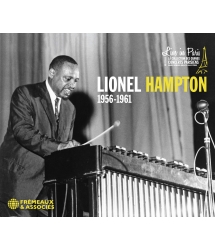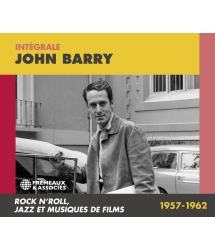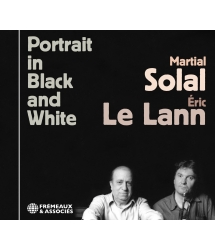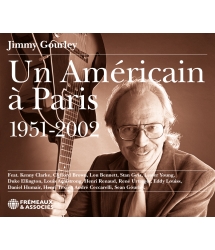- Our Catalog
- Philosophy
- Philosophers of the 20th century and today
- History of Philosophy (PUF)
- Counter-History and Brief Encyclopedia by Michel Onfray
- The philosophical work explained by Luc Ferry
- Ancient thought
- Thinkers of yesterday as seen by the philosophers of today
- Historical philosophical texts interpreted by great actors
- History
- Books (in French)
- Social science
- Historical words
- Audiobooks & Literature
- Our Catalog
- Jazz
- Blues
- Rock - Country - Cajun
- French song
- World music
- Africa
- France
- Québec / Canada
- Hawaï
- West Indies
- Caribbean
- Cuba & Afro-cubain
- Mexico
- South America
- Tango
- Brazil
- Tzigane / Gypsy
- Fado / Portugal
- Flamenco / Spain
- Yiddish / Israel
- China
- Tibet / Nepal
- Asia
- Indian Ocean / Madagascar
- Japan
- Indonesia
- Oceania
- India
- Bangladesh
- USSR / Communist songs
- World music / Miscellaneous
- Classical music
- Composers - Movie Soundtracks
- Sounds of nature
- Our Catalog
- Youth
- Philosophy
- News
- How to order ?
- Receive the catalog
- Manifesto
- Dictionnary











- Our Catalog
- Philosophy
- Philosophers of the 20th century and today
- History of Philosophy (PUF)
- Counter-History and Brief Encyclopedia by Michel Onfray
- The philosophical work explained by Luc Ferry
- Ancient thought
- Thinkers of yesterday as seen by the philosophers of today
- Historical philosophical texts interpreted by great actors
- History
- Books (in French)
- Social science
- Historical words
- Audiobooks & Literature
- Our Catalog
- Jazz
- Blues
- Rock - Country - Cajun
- French song
- World music
- Africa
- France
- Québec / Canada
- Hawaï
- West Indies
- Caribbean
- Cuba & Afro-cubain
- Mexico
- South America
- Tango
- Brazil
- Tzigane / Gypsy
- Fado / Portugal
- Flamenco / Spain
- Yiddish / Israel
- China
- Tibet / Nepal
- Asia
- Indian Ocean / Madagascar
- Japan
- Indonesia
- Oceania
- India
- Bangladesh
- USSR / Communist songs
- World music / Miscellaneous
- Classical music
- Composers - Movie Soundtracks
- Sounds of nature
- Our Catalog
- Youth
- Philosophy
- News
- How to order ?
- Receive the catalog
- Manifesto
- Dictionnary
SÉBASTIEN GIRARDOT - DAVID BLENKHORN - GUILLAUME NOUAUX
Ref.: FA8514
EAN : 3448960851428
Label : Frémeaux & Associés
Total duration of the pack : 43 minutes
Nbre. CD : 1
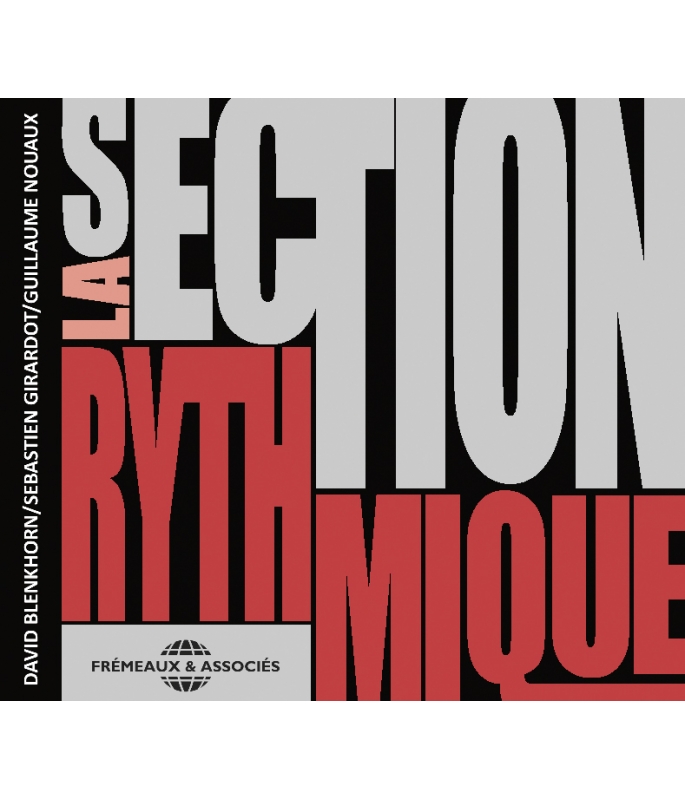
From New Orleans to Paris and festivals around the globe, this trio plays with some of the best in swinging jazz today. David Blenkhorn (John Faddis, Scott Hamilton, Lee Konitz), Sébastien Girardot (Lillian Boutté, Evan Christopher, Cecile McLorin Salvant) and Guillaume Nouaux (Donald Harrison Jr, Chuck Berry, Leroy Jones) have a fresh take on these standards of new orleans jazz combining elements of creole, blues and funk. It is for good reason that this trio is Evan Christopher’s preferred rhythm section as it developed its personal sound informed by his knowledge of the culture and music of New Orleans (he also writes the liner notes). This group has already proven itself talented accompanists to some of the top jazzmen and is ready to take centre stage in their own right. Augustin BONDOUX & Patrick FRÉMEAUX
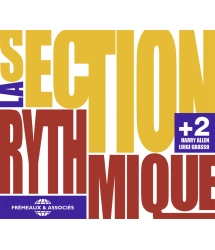
LA SECTION RYTHMIQUE, HARRY ALLEN, LUIGI GRASSO
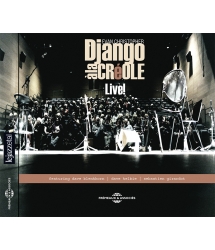
EVAN CHRISTOPHER
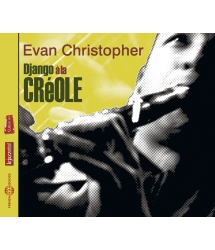
EVAN CHRISTOPHER



-
PisteTitleMain artistAutorDurationRegistered in
-
1Hard TimesDavid Blenkhorn-Sébastien Girardot- Guillaume Nouaux00:05:042014
-
2Just A Closer Walk With TheeDavid Blenkhorn-Sébastien Girardot- Guillaume Nouaux00:05:442014
-
3Buddy Bolden's BluesDavid Blenkhorn-Sébastien Girardot- Guillaume Nouaux00:04:162014
-
4Elijah RockDavid Blenkhorn-Sébastien Girardot- Guillaume Nouaux00:03:462014
-
5Night TrainDavid Blenkhorn-Sébastien Girardot- Guillaume Nouaux00:03:572014
-
6Saint James InfirmaryDavid Blenkhorn-Sébastien Girardot- Guillaume Nouaux00:05:022014
-
7It Ain't My FaultDavid Blenkhorn-Sébastien Girardot- Guillaume Nouaux00:04:252014
-
8Girl Of My DreamsDavid Blenkhorn-Sébastien Girardot- Guillaume Nouaux00:03:372014
-
9The MoocheDavid Blenkhorn-Sébastien Girardot- Guillaume Nouaux00:02:542014
-
10The Nearness Of YouDavid Blenkhorn-Sébastien Girardot- Guillaume Nouaux00:04:412014
La Section rythmique FA8514
LA SECTION RYTHMIQUE
En 2006, juste après que La Nouvelle-Orléans ait été décimée par les eaux, j’ai suivi la trace de Sidney Bechet en partant vivre en France. J’y suis resté près de deux ans. Si cette expérience a été bénéfique pour moi, c’est en grande partie grâce à cette Section Rythmique. Par conséquent, c’est à la fois un plaisir et un honneur d’exprimer par ces quelques mots mon avis sur ce trio qui est important tant sur le plan musical que sur le plan humain dans cette étape de ma vie. J’ai aussi envie de partager mes vues pour vous faire comprendre pourquoi vous trouvez, ou trouverez ces enregistrements si plaisants. (…)
Après seulement quelques secondes de chaque piste, l’auditeur peut se rendre compte de l’essence même qui fait la force de ce trio : un groove puissant, une riche précision mélodique, un feeling personnel et enjoué, le tout dans un immense respect de la tradition. Cette référence à la tradition ne se fait pas à travers un simple travail de reproduction, mais par l’usage d’un vocabulaire musical stylé, sachant capturer l’essence même des musiciens qu’ils admirent le plus. La formule pourtant classique du trio guitare-contrebasse-batterie qui joue des standards de jazz, fait ici preuve d’une étonnante fraicheur et vitalité. Ceci est dû au soin tout particulier qui a été apporté dans l’écriture des arrangements, qui traduit cette envie de mettre en exergue les valeurs et tout le plaisir que prennent ces musiciens en faisant honneur aux héroïques pionniers qui sont à l’origine de la musique commercialisée sous le nom de « jazz ».
Nés en Australie, respectivement à Tamworth et Melbourne, Blenkhorn et Girardot confirment mes convictions qui sont que les musiciens australiens possèdent un esprit plus « Américain » que nombre de musiciens américains. Né en Aquitaine dans le Sud-Ouest de la France, Nouaux incarne tout autant ces qualités. Ayant absorbé de nombreux styles, sa force est de pouvoir créer ses propres combinaisons mélangeant des schémas issus du swing, avec des éléments de style New Orleans. Son panel s’étend de Warren « Baby » Dodds, Paul Barbarin et Cie Frazier, à Joseph « Smokey » Johnson, Shannon Powell et Herlin Riley.
(…) Je suis consterné par le fait que le rôle pourtant immuable de la section rythmique semble être de nos jours, un art en perdition dans le jazz, et en même temps très fier que notre trio soit très apprécié pour cela. La liste des artistes ayant choisi Blenkhorn, Girardot et Nouaux pour section rythmique inclut un grand nombre de musiciens reconnus comme Dan Barrett et Bob Barnard, des chanteuses comme Cécile McLorin Salvant et Lillian Boutté, et des ambassadeurs piliers de La Nouvelle-Orléans, comme Leroy Jones, Duke Heitger et moi-même (je continue d’ailleurs à faire appel à eux aussi souvent que les occasions me le permettent).
Lorsqu’une section rythmique fait monter la sauce, c’est viscéral, cela donne envie aux gens de bouger, de danser, d’aimer. En plus de rendre la musique encore plus plaisante, le groove communique un feeling, une culture et elle rapproche les personnes. On espère que La Section Rythmique poursuivra son travail si important qui consiste à étendre l’héritage des grands jazzmen de l’histoire. Si plus de gens dans le monde étaient touchés par l’esprit d’avant-garde des Louis Armstrong, Duke Ellington, Jelly Roll Morton, Django Reinhardt et autres, le monde se porterait mieux. Il n’y a malheureusement seulement qu’une poignée d’enregistrements sur lesquels on puisse retrouver cette Section Rythmique au complet, cependant ils révèlent tous de sa polyvalence, sa généreuse énergie, et de la délicate attention apportée aux moindres détails musicaux. Alors que sa solide réputation ne soit désormais plus à faire en tant qu’accompagnatrice pour de nombreux artistes, c’est avec une joie immense que l’on peut enfin écouter La Section Rythmique voler brillamment de ses propres ailes.
Evan Christopher - Clarinettiste et compositeur de La Nouvelle-Orléans.
LA SECTION RYTHMIQUE
In 2006, just a few months after the city of New Orleans was decimated by flood waters, I walked in Sidney Bechet’s footsteps by living in France. It was barely two years, and if the experiment had any success, it was mainly because of this rhythm section. Consequently, it is my pleasure and honor to express in words why I think that this trio is both musically, and even historically, significant. I also want to share some insights to explain why you find, or are finding, these recordings so enjoyable. (I’ll presume you have already heard the CD or are hearing it now, while you peruse these notes.)
The back story begins in Paris during World War II with a sub-culture of hot jazz record collectors, dancers and young musicians. They met covertly in basements to pore over, dance to, and learn recordings of American music. New Orleans musicians such as Sidney Bechet and Louis Armstrong figured prominently for this community that included pioneers of French jazz such as Claude Luter. After the Liberation, these young musicians held court in Latin Quarter dance clubs such as L’Orientais and popularized traditional New Orleans music even before the “Jazz Revival” took hold in New Orleans. Luter provided Sidney Bechet’s backing band when Bechet moved to France in 1951 and groups such as Les Haricot Rouges, for example, are as old as the earliest Preservation Hall touring band formed in 1963.
Throughout the 1950s, critics and producers such as Hugues Panassié, André Hodeir and Charles Délaunay, shaped the narrative about the music’s value and stewarded its popularity through journals such as the Bulletin of the Hot Club of France, Jazz Hot and La Revue du Jazz. However, this activity couldn’t stop European jazz from evolving away from the tradition. In the decade or so following Bechet’s death (1959) and prior to the arrival on the planet of the gentlemen recorded here-in, a community of European players had broken completely away from the jazz mainstream. More significantly, while the mainstream players busily struggled to earn their keep by actually playing gigs, the more modern musicians applied for funding and patronage from pro-European cultural entities. Germany provided the strongest model, but throughout Europe, cultural presenters and artists alike came to rely upon these funding sources, which nowadays are increasingly scarce.
This created a dichotomy in Europe that persists. Traditionalists who anchor their styles in African-American idioms, such as blues and swing, are contrasted by a multiplicity of improvisors who draw inspiration from not only ethnic or national musics, but also more contemporary genres. Where-as the former continues to be more associated with entertainment, the latter has currency as an art tradition. Both camps struggle to sustain themselves and both have their own niche audiences and supporters. However, other challenges for “traditionalists” have shaped their scene as well, and these are not limited to Europe.
Worldwide, amateur enthusiasts have done little to change the perception that earlier jazz styles are less serious and less virtuosic. The industry of music education compliments this view by largely dismissing styles connected to social dance, thus denying their cultural relevance or historical value. Even in the birthplace of jazz, over-dependence on tourism discourages originality and markets nostalgia over artistry. Lastly, aging fans and presenters seem to have difficulty engaging or marketing the music in ways that encourage sustainability.
But for ‘La Section Rhtymique’ these challenges are mere inconveniences, and after a few seconds of any track on this CD, one recognizes the true concerns of this trio: The potency of groove, the rich character of melody, performing in a personal and expressive way, and respecting the tradition not by obvious imitation but effective use of style-specific vocabulary that captures the essence of the players they admire most. The well-worn guitar trio format and equally well-worn repertoire maintain astounding freshness and vitality because of thoughtful arrangements that showcase these values and transmit the shared joy that these musicians find celebrating the heroic pioneers of the music often marketed as ‘Jazz.’
Native Australians Blenkhorn and Girardot, Tamworth and Melbourne respectively, confirm a contention I have long held that Australian musicians often possess a more “American” spirit (not aggression or arrogance, but ’old school’ boldness and audacious individuality) than many American musicians these days. Born in the Aquitaine region of Southwest France, Nouaux embodies these qualities as well. Having absorbed many styles, his strength is the ability to create his own combinations of swing era vocabulary with elements of New Orleans style ranging from Warren “Baby” Dodds, Paul Barbarin and Cie Frazier to Joseph “Smokey” Johnson, Shannon Powell and Herlin Riley.
Both the openings of Paul Mitchell’s soul-jazz classic, Hard Times, and the traditional gospel song, Just a Closer Walk With Thee reveal David Blenkhorn’s and Sebastien Girardot’s unapologetic assertion of a deep respect for the blues. Guillaume Nouaux starts the proceedings with sounds from the heart of the Tremé to indicate how ubiquitous the soul of New Orleans will be over the next hour. Hard Times seems closer to its Southern roots than even the composer’s treatment, while for Closer Walk, Blenkhorn exploits 3/4 time to disguise his homage to early modern guitarists such as Grant Green and Wes Montgomery.
Buddy Bolden’s Blues is a Jelly Roll Morton classic that was also known as Funky Butt in the reign of proto-jazz cornetist ‘King’ Bolden. Blenkhorn’s story begins closer to East Texas than the Delta, and the trio accepts the challenge of juxtaposing Morton’s sophisticated harmonies with a percussive edge and gritty blues feeling. In the end, jazz enthusiasts may find themselves mildly surprised that a series of simple melodic variations, including Girardot’s relaxed bass solo, are so rewarding. To them, I say, “Welcome to New Orleans music.”
Elijah Rock wonderfully captures the drama of Mahalia Jackson’s renderings in the 1960s. Anyone who has heard those versions, as this trio clearly has, would find Jackson’s New Orleans pedigree obvious. The piece is like a grand mural depicting not only Mahalia, but Jimi Hendrix, Howlin’ Wolf, Son House and so many others who exemplify the close connection between gospel music and the blues.
Next, the trio explores two blues classics. Night Train, credited to Duke Ellington alumnus Jimmy Forest, is a theme that bubbled up from experiments by Ellington including Happy Go Lucky Local. Ellington himself is on record saying he had a Southern train in mind, but just when you think the trio’s Night Train is gaining steam, it’s Guillaume Nouaux who answers Blenkhorn’s statement of the theme with his own melodic variation on his tom toms in the manner of the West-African talking drum.
The traditional St. James Infirmary Blues, on the other hand signals a shift in mood capturing the song’s original funeral dirge quality that has been obscured by countless more ‘slapstick’ versions. Girardot’s bowing, used sparingly throughout the recording, and Nouaux’s use of mallets add to the mournful texture of a New Orleans jazz-funeral procession. Appropriately, this dirge is followed by…
…That’s right, a Second Line. The versatility and depth that the trio shows on this jubilant rendition of Smokey Johnson’s New Orleans R & B classic It Ain’t My Fault is no surprise. Nouaux’s heart-felt appreciation of the composer’s contribution to funky New Orleans drumming influenced by New Orleans brass bands is obvious. Even though Girardot cut his teeth as a teen with ‘Revival’ style bands in Australia, the fact is that stylistically his approach here needs not change significantly. For Blenkhorn, work with musicians such as multi-instrumentalists James Morrison and Tom Baker certainly helped him to be well-rounded. But, his interests have always been diverse and he has the special ability to find something redeeming in virtually anything he hears.
The next two songs illustrates another aspect of the trios modernist sensibilities: Unique treatments of well-worn material. For Girl of My Dreams, Blenkhorn’s slide guitar gives the flavor of the Mississippi Delta, Girardot’s double stops echo Ray Brown’s muscular grooves, and Nouaux’s loose New Orleans feel gives the groove a heavy Southern drawl in this wickedly clever transformation of a waltz from 1927.
This CD works well as either a collection of songs or a catalog of the trio’s stylistic breadth, but it is also a delight as a complete concert, perhaps an informal but intimate club experience. In this context, Duke Ellington’s 1929 classic, The Mooche is the inspired closer. Ellington, who constantly updated the arrangement, would surely appreciate this version that dares to reference Jimi Hendrix and Herbie Hancock among others. It also nods to modern New Orleans jazz, completely replacing the original song’s major blues section with an energetic drum solo. Nouaux gives the impression that he has been waiting for this moment all night long.
Lastly, if one has listened to this CD in a single sitting, The Nearness of You, is the trio’s encore, a bit of ‘Lagniappe’ (something extra for Crescent City denizens). Of all the composers who contributed to the “Great American Songbook” repertoire, Hoagy Carmichael was the one who best captured a romanticized mood of the South with languid, singable themes such as this. Blenkhorn’s lyrical rendering of this 1938 melody does not disappoint largely due to the solid support from his cohorts.
It’s baffling to me that this more traditional role of being supportive is seemingly a lost art in jazz, but our trio is clearly appreciated for it. The list of artists who have chosen Blenkhorn, Girardot and Nouaux for their backing includes seasoned mainstream players such as Dan Barrett and Bob Barnard; singers including Cecile McClorin Salvant and Lilian Boutté; and stalwart New Orleans ambassadors such as Leroy Jones, Duke Heitger and even myself as often as I can arrange it. When rhythm sections get a groove happening, it’s visceral, it makes people want to move, want to dance, want to love. Besides making music more enjoyable, groove can impart feeling, cultural meaning and connection.
One hopes that they can continue the important work of extending the legacies of the early jazz greats. Certainly, the more people in the world touched by the spirit of vanguards such as Louis Armstrong, Duke Ellington, Jelly Roll Morton, Django Reinhardt, et al. the better. Although there are only a handful of recordings with this rhythm section as a unit behind others, they have collectively graced many recordings that reveal their versatility, generous energy and deliberate attention to musical detail. So, although their solid reputation is well documented with others, it is a joy to finally hear ‘La Section Rhythmique’ delivering brilliantly on their own.
Evan Christopher - New Orleans-based clarinetist and composer
© FRÉMEAUX & ASSOCIÉS 2015
LA SECTION RYTHMIQUE
David Blenkhorn : Guitare
www.davidblenkhorn.com
Sébastien Girardot : Contrebasse
www.sebastiengirardot.com
Guillaume Nouaux : Batterie
www.guillaumenouaux.com
Enregistré les 4 et 5 Mai 2014 @ Downtown Studio, Créon, France par D. Ottaviani
Mixé et Masterisé par D. Ottaviani
Conception graphique : Kid Von Beüf
Photo du dos : Thierry Dubuc
Fabrication et distribution : Frémeaux & Associés
Direction de collection : Augustin Bondoux
Conception collection : Patrick Frémeaux
& Claude Colombini
www.fremeaux.com
www.lasectionrythmique.com
1. Hard Times (Paul Mitchell & George V. Johnson Jr.) - 5:04
2. Just a Closer Walk with Thee (traditional) - 5:44
3. Buddy Bolden’s blues (Jelly Roll Morton) - 4:16
4. Elijah Rock (traditional) - 3:46
5. Night Train (Jimmy Forrest) - 3:57
6. Saint James Infirmary (traditional) - 5:02
7. It ain’t my Fault (Smokey Johnson & Wardell Quezergue) - 4:25
8. Girl of my Dreams (Sunny Clapp) - 3:37
9. The Mooche (Duke Ellington) - 2:54
10. The Nearness of You (Hoagy Carmichael) - 4:41
De la Frenchmen Street aux caves parisiennes, ils sont demandés par les plus grands et parcourent la planète derrière de nombreuses vedettes de la scène du jazz international. Composé de sidemen de premier choix : David Blenkhorn (John Faddis, Scott Hamilton, Lee Konitz), Sébastien Girardot (Lillian Boutté, Evan Christopher, Cecile McLorin Salvant) et Guillaume Nouaux (Donald Harrison Jr, Chuck Berry, Leroy Jones), ce combo dépoussière avec brio les standards du jazz qu’il assaisonne façon new orleans, teinté de funk, de blues et de groove créole. Ce n’est pas pour rien que le trio reçoit le patronage et parrainage tutélaire d’Evan Christopher (qui leur rend hommage dans le livret). Trop puissante pour rester enfermée dans la fonction statutaire d’accompagnatrice, La Section Rythmique décide désormais de s’affranchir d’un leader pour devenir un groupe à part entière et enfin dominer le devant de la scène.
Augustin BONDOUX & Patrick FRÉMEAUX
From New Orleans to Paris and festivals around the globe, this trio plays with some of the best in swinging jazz today. David
Blenkhorn (John Faddis, Scott Hamilton, Lee Konitz), Sébastien Girardot (Lillian Boutté, Evan Christopher, Cecile McLorin Salvant) and Guillaume Nouaux (Donald Harrison Jr, Chuck Berry, Leroy Jones) have a fresh take on these standards of new orleans jazz combining elements of creole, blues and funk. It is for good reason that this trio is Evan Christopher’s preferred rhythm section as it developed its personal sound informed by his knowledge of the culture and music of New Orleans (he also writes the liner notes). This group has already proven itself talented accompanists to some of the top jazzmen and is ready to take centre stage in their own right. Augustin BONDOUX & Patrick FRÉMEAUX
Sébastien Girardot Contrebasse David Blenkhorn Guitare Guillaume Nouaux Batterie
